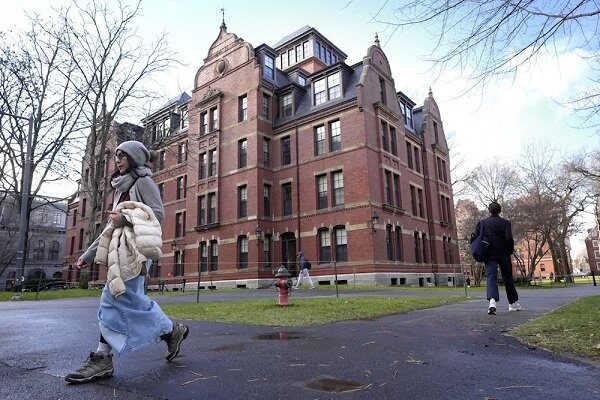Trump Administration Seethes Over Harvard’s Actions, Threatens to Cut $1 Billion in Funding
In a surprising turn of events, officials in the administration had anticipated that a detailed list of demands sent to Harvard last Friday would remain confidential, laying the groundwork for further discussions. However, the situation took a dramatic twist when Harvard publicly disclosed the letter on Monday, prompting a significant shift in the government’s strategy regarding the prestigious institution.
Prior to the letter’s release, the administration had planned to adopt a more lenient approach with Harvard compared to Columbia University. Insiders report that this unexpected disclosure led officials to reconsider their stance and increase pressure on Harvard. The public nature of the demands has raised questions about the administration’s strategy and its implications for higher education institutions.
According to sources close to Harvard, there was never an agreement to keep the letter private. The demands outlined in the correspondence, which included federal oversight of admissions, hiring practices, and even the ideological leanings of students and staff, were deemed unacceptable by Harvard from the outset. This development has sparked significant debate about the role of government in university operations and the broader implications for academic freedom.
The demands originated from a newly established group within the Trump administration, known as the Task Force to Combat Anti-Semitism. This task force aims to address concerns regarding antisemitism on college campuses, but the approach has raised eyebrows regarding its potential impact on academic independence.
In an open letter addressed to the university community, Harvard President Alan Garber expressed his concerns regarding the demands. He stated that the list demonstrated a lack of intention to collaborate with the university in a “cooperative and constructive manner” to tackle antisemitism. Furthermore, he emphasized, “We have informed the administration through our legal counsel that we will not accept their proposed agreement.”
This situation has highlighted the growing tension between the federal government and higher education institutions, particularly regarding issues of free speech and academic governance. Below are some key points regarding the unfolding events:
- Surprise Public Disclosure: Harvard’s decision to make the letter public caught the administration off guard.
- Shift in Strategy: The government altered its approach towards Harvard, increasing pressure following the letter’s release.
- Unacceptable Demands: Harvard viewed the proposed demands, including federal oversight, as unacceptable from the beginning.
- Task Force Formation: The demands originated from the Trump administration’s Task Force to Combat Anti-Semitism.
- President’s Response: Harvard President Alan Garber criticized the demands and expressed a commitment to academic independence.
The implications of this incident are significant for both Harvard and other institutions across the country. As academic environments continue to grapple with complex social issues, the role of government oversight remains a contentious topic. The administration’s approach may lead to broader discussions about the balance between combating hate and maintaining the integrity of educational institutions.
Furthermore, the confrontation between Harvard and the government has sparked a nationwide conversation regarding the responsibilities of universities in addressing antisemitism while preserving academic freedom. As debates continue, many are left wondering about the future relationship between federal authorities and higher education.
This incident serves as a critical moment for universities to reflect on their governance structures and the extent to which they are willing to engage with federal authorities on sensitive issues, including hate speech and discrimination. As Harvard and the administration navigate these complex waters, the outcome could set important precedents for how similar situations are handled in the future.
In conclusion, the public release of the demands by Harvard has not only changed the dynamics of the relationship between the university and the government but has also raised essential questions about the future of academic freedom and the role of federal oversight in university affairs. The ongoing dialogue will be crucial in shaping how universities respond to external pressures while upholding their missions of education and research.






